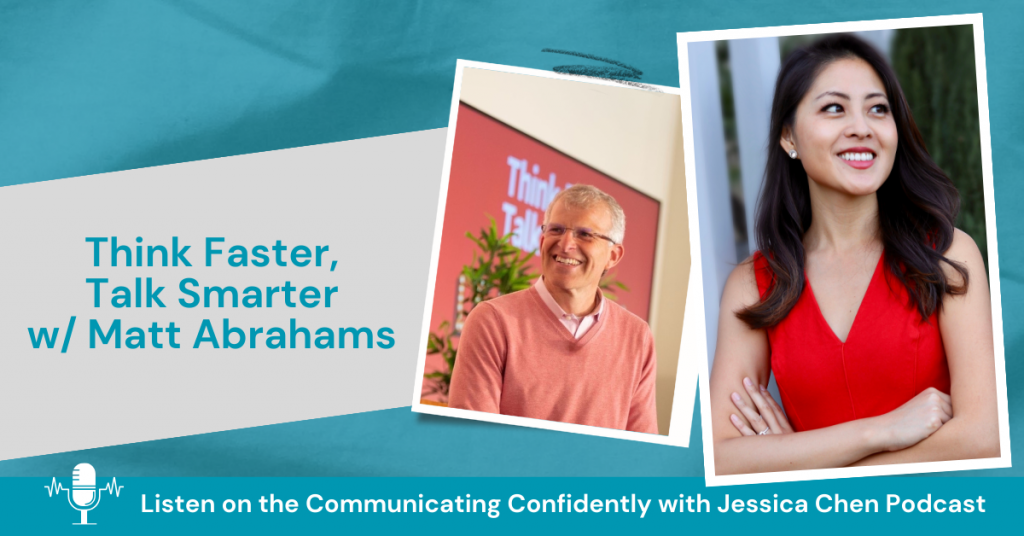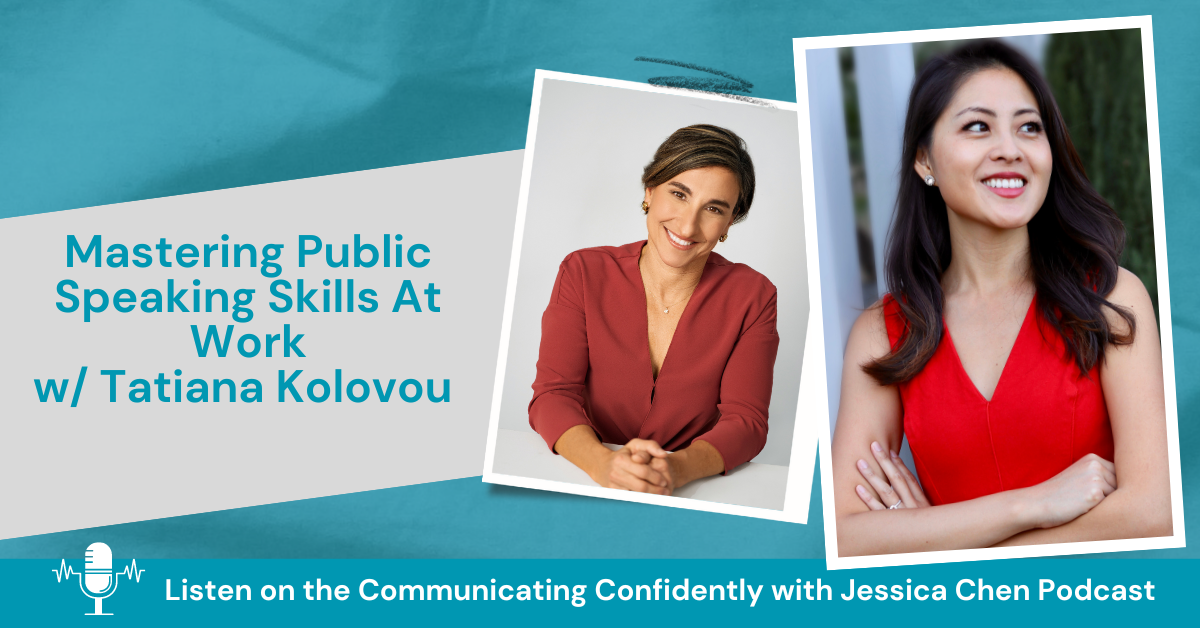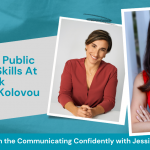Think Faster, Talk Smarter
Spontaneous conversations can feel nerve-wracking, especially if we aren’t sure what to say or how to respond quickly. Many of us get stuck trying to make sure we are perfect. In this week’s newsletter, our Founder & CEO, Jessica Chen, chats with author Podcast Host of Think Faster, Talk Smarter, Matt Abrahams, as he shares how to think faster and talk smarter.
Below is a small snippet of the entire conversation between held on our Soulcast Media | LIVE show. If you’d like to watch or listen to the entire interview, click below. The transcript has been slightly edited for reading ease.
📺 Watch the full live event here
Jessica – It’s true that a lot of communications is not just about learning how to give good presentations; it’s impromptu, where you’re suddenly standing face to face with somebody, somebody asks you a question, and you’re thinking, “Oh my gosh, I don’t know what to say.” I think that’s where think faster, talk smarter comes in, right?
Matt – Absolutely. Most of our communication is unplanned. It’s not the presentation or the meeting with the agenda.
Most of our communication in our personal and professional lives is spontaneous. It happens in the moment. Many people feel trapped by their anxiety around speaking, and there are certain things we can do to help ourselves feel more comfortable and confident in our communication.
We need to realize that these circumstances are not about getting it right. Many of us put a lot of pressure on ourselves to give the right answer, give the best feedback, and be the most interesting.
It’s about connection, not perfection. It’s not about getting it right. There is no right way to communicate. There are better ways and worse ways. But there is no one right way.
I’d also like people to see these circumstances as opportunities, not threats. Many of us get very defensive when someone starts to ask us questions. We get tight. Our answers are short. If we see it as an opportunity to connect and expand, it can really help.
So I encourage you when you’re going to have to speak spontaneously, see it as an opportunity that you can really lean into.
What helps you get through these spontaneous speaking situations is having a structure, a framework you can use.
Most of us, when we’re asked to speak spontaneously, take our audience on a journey of our discovery of what it is we’re saying as we say it. We just itemize and list things. And our brains aren’t wired for lists. Instead, we need a structure. We need a logical connection. I’ll give you one example. If you’ve ever seen a television ad, you understand the structure problem solution benefit.
Most television ads start by saying, here’s a challenge, problem, or issue. Here’s how we solve it, and here’s the benefit. If you can leverage using a structure, you’ll feel more comfortable and confident speaking in the moment.
If you’d like to watch or listen to the entire interview, click below.
📺 Watch the full live event here
Whenever you’re ready, there are 3 ways we can help you:
- Discover your communications style so you know where to start. Over 4,000 people have found theirs here.
- Attend our monthly communication workshop to build communications confidence (new topics: public speaking, advocating for yourself, building credibility, etc) here.
- Get your brand in front of 43k+ people by sponsoring our newsletter or Soulcast Media | LIVE LinkedIn events [contact: hello@soulcastmedia.com]











